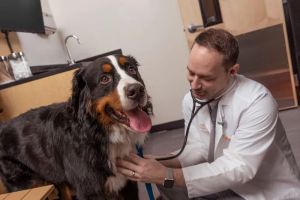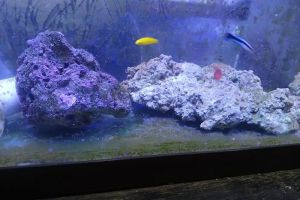
How to Spot Early Signs of Pet Kidney Disease
As a pet owner, one of your most important responsibilities is ensuring the health and well-being of your furry companion. Kidney disease is a common health issue in pets, especially as they age, and detecting it early can make a significant difference in treatment outcomes. In this article, we will guide you through the early signs of kidney disease in pets, how to spot them, and what you can do to help your pet live a healthier life.
- Understanding Kidney Disease in Pets
- Early Signs of Kidney Disease in Pets
- Risk Factors for Pet Kidney Disease
- Diagnosis and Treatment for Kidney Disease in Pets
- Preventing Renal Issues in Pets
- Real-Life Cases and Success Stories
1. Understanding Kidney Disease in Pets
Kidney disease in pets, especially in dogs and cats, is a serious health condition that affects the kidneys’ ability to filter waste from the blood. As pets age, the kidneys can gradually lose their ability to function properly, leading to a build-up of toxins in the body. Chronic kidney disease (CKD) is the most common form of kidney disease in pets and typically develops over time. Early detection is key to managing the condition and improving your pet’s quality of life.
1.1 The Role of Kidneys in Your Pet’s Health
The kidneys are responsible for filtering waste and excess fluids from the bloodstream. They also regulate important functions such as electrolyte balance, blood pressure, and red blood cell production. When the kidneys begin to fail, these functions are disrupted, which can lead to a variety of symptoms and health issues for your pet.
1.2 Chronic vs. Acute Kidney Disease
Kidney disease can be categorized into two types: chronic and acute. Chronic kidney disease (CKD) develops slowly over time, often as a result of aging or long-term conditions, while acute kidney disease can develop suddenly due to infection, toxins, or injury. Both types require immediate veterinary attention, but CKD tends to be more progressive and may require long-term management strategies.
2. Early Signs of Kidney Disease in Pets
Spotting the early signs of kidney disease in pets can be challenging, as the symptoms may be subtle at first. However, understanding the common signs can help you take action early. Here are some key early signs to look out for:
2.1 Increased Thirst and Urination
One of the first signs of kidney disease in pets is increased thirst (polydipsia) and urination (polyuria). As the kidneys lose their ability to concentrate urine, pets will often drink more water to compensate for the fluids being lost. If you notice your pet drinking more water or needing to urinate more frequently, this could be an early warning sign.
2.2 Loss of Appetite and Weight Loss
A decrease in appetite and unexplained weight loss are also common symptoms of kidney disease. As toxins build up in the bloodstream, pets may feel nauseous, which can lead to a reduced interest in food. If you notice your pet is eating less or losing weight, it could be a sign of kidney dysfunction.
2.3 Vomiting and Dehydration
Vomiting and dehydration are also common indicators of kidney disease. As the kidneys fail to filter waste, the build-up of toxins can cause gastrointestinal upset, leading to vomiting. Additionally, the loss of fluids through increased urination can result in dehydration, which exacerbates the symptoms.
2.4 Lethargy and Weakness
Pets with kidney disease often become lethargic and weak due to the overall decline in their health. If your pet seems less active, sleeps more than usual, or has difficulty getting up, it may be time to have them checked by a veterinarian.
2.5 Bad Breath (Uremic Breath)
As kidney function declines, pets may develop bad breath, often described as "uremic breath," which has a strong ammonia-like odor. This occurs due to the accumulation of waste products in the blood that the kidneys can no longer filter out effectively.
3. Risk Factors for Pet Kidney Disease
Several factors can increase the risk of kidney disease in pets, especially as they get older. Understanding these risk factors can help you take preventive measures and detect the disease earlier:
3.1 Age
As pets age, their kidney function naturally declines. Chronic kidney disease is most common in pets over the age of 7, but younger pets can still develop kidney issues, especially if they have underlying health conditions.
3.2 Breed
Certain breeds of dogs and cats are more prone to kidney disease. For example, breeds like Persian cats and Dachshunds are more likely to develop kidney problems due to genetic predisposition. Be aware of your pet’s breed-specific risks and discuss them with your veterinarian.
3.3 Dehydration
Chronic dehydration, often caused by not drinking enough water, can put extra strain on the kidneys and increase the risk of kidney disease. Make sure your pet has access to fresh water at all times and encourages hydration, especially during hot weather.
3.4 High Blood Pressure and Diabetes
High blood pressure and diabetes can both contribute to kidney damage. If your pet has a history of either of these conditions, regular check-ups with your veterinarian are essential to monitor kidney function and prevent further complications.
4. Diagnosis and Treatment for Kidney Disease in Pets
If you suspect your pet may be suffering from kidney disease, it's important to consult with a veterinarian as soon as possible. Early diagnosis can improve the chances of managing the condition and extending your pet’s life.
4.1 Veterinary Tests for Kidney Disease
To diagnose kidney disease, your veterinarian will perform blood tests, urine tests, and possibly imaging to assess kidney function. Blood tests will look for elevated levels of creatinine and blood urea nitrogen (BUN), which are indicators of kidney dysfunction. A urine test will check for protein levels, which can indicate kidney damage.
4.2 Treatment Options
While kidney disease cannot be cured, it can often be managed with proper treatment. Treatment options may include special diets designed to reduce kidney workload, medications to control symptoms like nausea and high blood pressure, and fluids to help maintain hydration. In severe cases, dialysis or even a kidney transplant may be necessary, but these are rare and typically used for advanced cases.
5. Preventing Renal Issues in Pets
While not all kidney disease is preventable, there are several steps you can take to support your pet’s kidney health throughout their life:
5.1 Maintain a Healthy Diet
Feeding your pet a balanced, age-appropriate diet can help support kidney health. Avoid feeding your pet too many treats or human food, which can be high in salt and fat. Special kidney-friendly diets are available for pets with early-stage kidney disease.
5.2 Regular Vet Check-Ups
Routine veterinary visits are essential for early detection of kidney disease. Regular blood tests and urinalysis can help monitor kidney function and catch any potential issues before they become severe.
5.3 Encourage Hydration
Ensure your pet always has access to fresh water. Consider using water fountains for pets, as they tend to encourage more frequent drinking, which is crucial for kidney health.
6. Real-Life Cases and Success Stories
Many pet owners have successfully managed their pets' kidney disease with early intervention and the right treatment. For example, Max, a 10-year-old Labrador, was diagnosed with early-stage kidney disease. With a special diet, regular vet visits, and proper hydration, Max’s condition stabilized, and he continued to live an active life for several more years.
Another success story involves Daisy, a senior cat diagnosed with kidney disease. Her owner followed the vet’s advice and changed Daisy’s diet, provided regular fluids, and used medications to manage symptoms. Daisy’s quality of life improved significantly, and she remained happy and comfortable for several years after her diagnosis.
If you’re concerned about your pet’s health or want to ensure they have the best care possible, visit Pet & Puppy for high-quality products and services to support your pet’s kidney health and overall well-being.









 Healing Wise Holistic Veterinary Care4.0 (4 reviews)
Healing Wise Holistic Veterinary Care4.0 (4 reviews) Stone Ridge Animal Care4.0 (198 reviews)
Stone Ridge Animal Care4.0 (198 reviews) Animal Medical Center4.0 (329 reviews)
Animal Medical Center4.0 (329 reviews) Village East Animal Hospital4.0 (676 reviews)
Village East Animal Hospital4.0 (676 reviews) MY PET'S PLACE4.0 (3 reviews)
MY PET'S PLACE4.0 (3 reviews) Midway Veterinary Clinic: Jarrod Goff DVM4.0 (15 reviews)
Midway Veterinary Clinic: Jarrod Goff DVM4.0 (15 reviews) How to Use Behavior Tracking Apps for Pets: Monitor Health & Behavior
How to Use Behavior Tracking Apps for Pets: Monitor Health & Behavior The Psychology Behind Pet Bonding: What Science Reveals
The Psychology Behind Pet Bonding: What Science Reveals Coping with Pet Separation During Long Vacations: Tips & Solutions
Coping with Pet Separation During Long Vacations: Tips & Solutions Behind the Scenes of a Veterinary Clinic: What Happens in 24 Hours
Behind the Scenes of a Veterinary Clinic: What Happens in 24 Hours Top 10 Mistakes New Pet Owners Make & How to Avoid Them
Top 10 Mistakes New Pet Owners Make & How to Avoid Them Which Pet Supplements Are Worth the Money (and Which Aren’t)?
Which Pet Supplements Are Worth the Money (and Which Aren’t)?